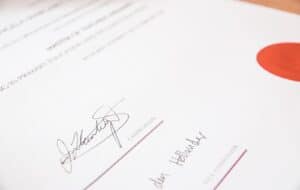“What does a real GED look like?” This question often arises when individuals are embarking on their journey to obtain a General Educational Development (GED) credential. The pursuit of a GED is a significant step towards achieving educational and career goals for those who may not have completed high school.
However, the term “real GED” implies that there may be misconceptions or misunderstandings surrounding this valuable qualification. In this article, we will explore the key components of a genuine GED, shedding light on what it truly means and what you can expect as you work towards earning this vital credential.
A General Education Development (GED) certificate is a document that certifies that an individual has passed the GED test and has achieved the knowledge and skills equivalent to a high school diploma. The certificate is usually a printed document that features the test taker’s name, the date of the test, and the seal of the issuing organization.

It is important to know what a real GED certificate should look like to help you identify a fake one. Unfortunately, there are individuals who may create fake GED certificates and sell them to others. These certificates may look similar to real ones but lack the authenticity and legality of a real GED certificate.
Having a real GED certificate can open many doors for individuals. They can help them pursue higher education or training, and make them more competitive in the job market. For this reason, it is crucial to understand what a real GED certificate should look like and how to verify its authenticity.
What Does a Real GED Look Like: Physical Characteristics GED Certificate
A real GED certificate has several physical characteristics that make it unique and distinguishable from a fake one. Here are some key physical characteristics to look for when verifying the authenticity of a GED certificate:
- Size and shape: GED certificates are typically 8.5 x 11 inches in size and have a rectangular shape.
- Paper quality: Real GED certificates are printed on high-quality paper with a watermark or special security thread that can only be seen when held to the light.
- Color: Real GED certificates are usually printed in full color and have a color seal of the issuing organization.
- Text and fonts: Real GED certificates use official fonts and include the test taker’s name, the date of the test, and the seal of the issuing organization.

By keeping an eye out for these physical characteristics, you can be confident that the GED certificate you’re looking at is a real one and not a fake one.
Features of a Real GED Diploma: Seal, Signatures, and Watermarks
A real GED diploma, like any other official document, has several features that ensure its authenticity and validity. Here are some key features to look for when verifying the authenticity of a GED diploma:
- Seal: A real GED diploma will have an official seal of the issuing organization, which is typically located in the top left corner or center of the certificate. The seal is usually a raised or embossed image that gives the certificate a 3D look.
- Signatures: A real GED diploma will have the signatures of the officials of the issuing organization who are responsible for certifying the test results. These signatures are usually located near the bottom of the certificate.
- Watermarks: A real GED diploma will also have a watermark, which is a faint image that can only be seen when the certificate is held up to the light. This feature helps to prevent forgery of the certificate
- Serial number: A real GED diploma will have a unique serial number, usually located at the bottom of the certificate, it allows you to trace the certificate back to the issuing organization.

By keeping an eye out for these features, you can be confident that the GED diploma you’re looking at is a real one and not a fake one. It’s also important to note that, depending on the issuing organization, not all GED diplomas may have exactly the same features, but they should have most of the aforementioned characteristics.
How to Verify the Authenticity of a GED Certificate
It is important to verify the authenticity of a GED certificate to ensure that it is legitimate and will be accepted by employers, educational institutions, and other organizations. Here are some steps you can take to verify the authenticity of a GED certificate:
- Contact the issuing organization: The first step in verifying a GED certificate is to contact the issuing organization and ask them to confirm the authenticity of the certificate. They will usually be able to verify the certificate using the serial number or other identifying information.
- Look for security features: Look for security features such as watermarks, raised seals, and holograms on the certificate. These are often used to prevent forgery and indicate that the certificate is legitimate.
- Check the official website: Many issuing organizations have an official website where you can verify the authenticity of a GED certificate. On the website, you can often find a verification or “check a certificate” tool where you can enter the serial number or other identifying information and receive confirmation of the certificate’s validity.
- Ask for documentation: Ask the holder of the certificate to provide documentation of their GED test scores and any other supporting documents. You can also ask for proof that they have passed the test and have the knowledge and skills equivalent to a high school diploma.
By taking these steps, you can be confident that the GED certificate you’re looking at is a real one and not a fake one.
